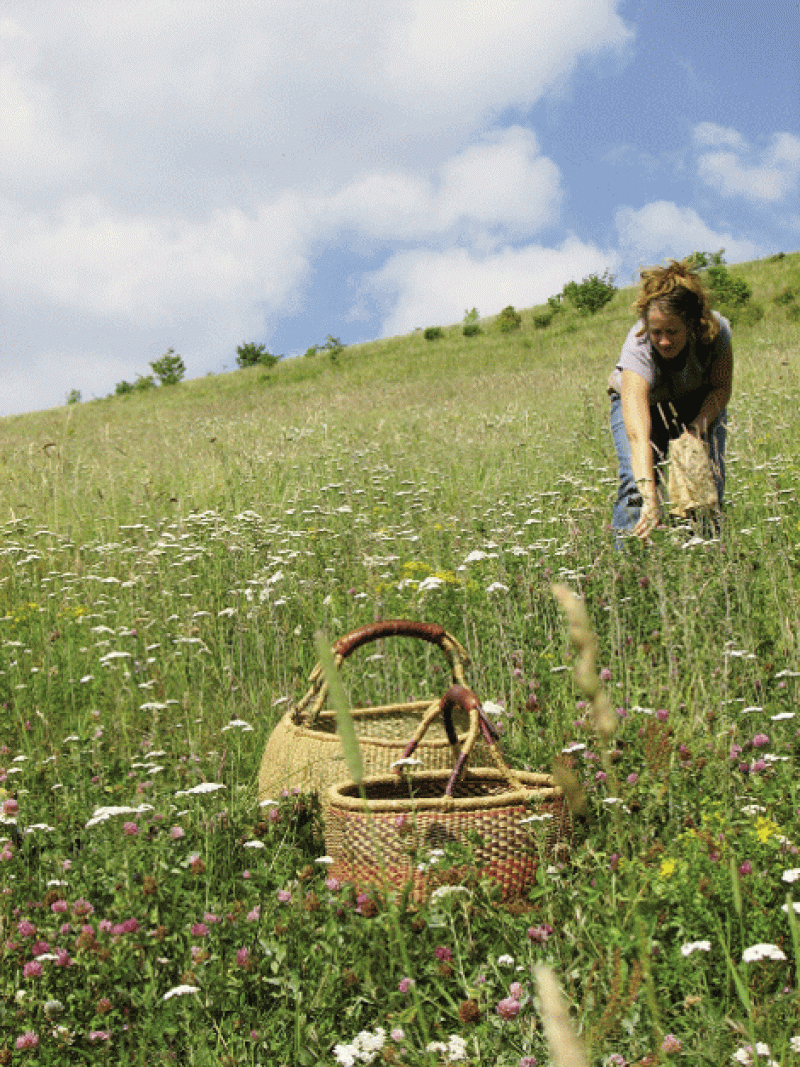Backyard Medicine
Backyard Medicine: The Chestnut School of Herbal Medicine teaches the ways of nature’s remedies
Juliet Blankespoor sees medicines in every walk she takes through the woods, slipping away to look at the plants and study their divine qualities for healing, calming, and nourishing the body and soul.
As director of The Chestnut School of Herbal Medicine in Leicester and an herbalist for more than 20 years, Blankespoor is eager to pass along her knowledge and passion for plants during the Roots of Herbalism session. The multiweekend program, which begins in April, teaches participants how to identify, harvest, and use plants with medicinal properties.
Blankespoor will show students how to ethically harvest flowers, bark, roots, leaves, and stems, and turn them into tinctures, teas, and salves. During the classes, which are held at the school’s terraced gardens and greenhouses, as well as on private land and in forests nearby, participants learn to identify and gather wild edibles, including dandelion greens, chickweed, and Lamb’s quarter. She’ll also discuss permaculture and fermenting mead, kimchi, and sauerkraut.
By the end of the session, each student will have created a natural medicine chest. Homemade medicines made from plants that grow regionally often have fewer side effects than pharmaceutical drugs, Blankespoor says. And the ingredients for those medicines, including coneflower used to stimulate the immune system and goldenrod which fights colds, can be found in your backyard.
“It’s empowering to know what to go out and pick and use if you’re sick,” she says. “That’s a pre-human skill that most of us have lost. When people reconnect with that ability, something goes off in them that’s in their ancestral DNA. It really nourishes people on a deep level.” As do the plants and herbs.
For instance, goldenrod, often used in a tincture, is good for the kidneys and sinuses. With its resiny flavor, it makes a tasty, warming tea that alleviates allergies, head colds, and urinary tract infections, Blankespoor says.
Chickweed, an anti-inflammatory rich in vitamins and minerals, is cooling and soothing. It can be made into salves to treat rashes and scrapes and into tea to calm inflamed mucus membranes. The tea has traditionally been used as a blood cleanser and spring tonic for those convalescing.
Other plants the group harvests include sochan, also known as green-headed or cutleaf coneflower, which grows from Florida to New England. Many Cherokee eat it as greens because it stimulates the immune system. Blankespoor uses it to head off a cold. “When you chew on the root of the sochan plant, it has the same tingle as echinacea,” as well as similar, but milder, immune-boosting properties, she says. Sochan is also more tonic.
The bark of black cherry, which grows abundantly in Western North Carolina, makes a good tea, syrup, or tincture that slows coughs. Black cherry is also an
effective sedative for people with fevers and increased heart rates, she explains.
The woods are full of plants like these, and Blankespoor enjoys sharing her knowledge of them. “I love seeing people get excited about medicinal plants and become more empowered to take care of themselves and their health.”
